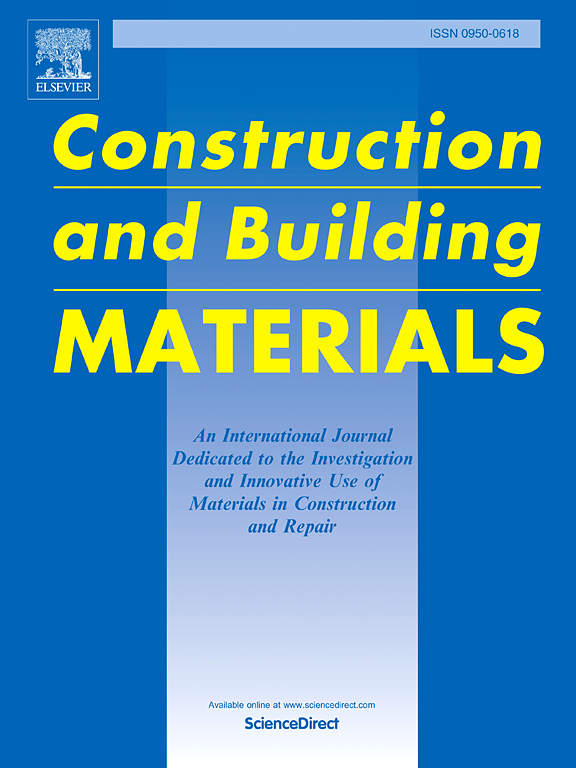Study on the drying shrinkage behavior and influencing factors of fly ash-based geopolymers under different humidity conditions
IF 7.4
1区 工程技术
Q1 CONSTRUCTION & BUILDING TECHNOLOGY
引用次数: 0
Abstract
Geopolymers have garnered significant research interest due to their low carbon emissions during production, low energy consumption, ability to utilize various industrial waste residues, and superior physicochemical properties. This study systematically investigated the drying shrinkage behavior of fly ash-based geopolymers (FABGs) in gradient and constant humidity conditions under different influencing factors (activator modulus, activator concentration, and liquid-solid ratio). The mechanisms by which these factors influence drying shrinkage were elucidated through a comprehensive suite of macroscopic and microscopic testing methods. The results indicate that FABGs subjected to various influencing factors exhibit distinct capillary pore characteristics and shrinkage resistance properties, thereby manifesting different drying shrinkage behaviors. Specifically, an increase in activator concentration and a decrease in modulus led to the refinement of capillary pores, which in turn increased capillary shrinkage stress under low-humidity conditions, resulting in greater drying shrinkage. Additionally, an increase in the liquid–solid ratio had minimal impact on the distribution of capillary pores but significantly deteriorated the shrinkage resistance properties of the paste, leading to increased drying shrinkage. Moreover, the persistence of geopolymer drying shrinkage is closely related to capillary pore characteristics. Smaller capillary pores hinder the escape of water from the geopolymer paste, thereby prolonging the drying shrinkage process and increasing subsequent shrinkage creep.
求助全文
约1分钟内获得全文
求助全文
来源期刊

Construction and Building Materials
工程技术-材料科学:综合
CiteScore
13.80
自引率
21.60%
发文量
3632
审稿时长
82 days
期刊介绍:
Construction and Building Materials offers an international platform for sharing innovative and original research and development in the realm of construction and building materials, along with their practical applications in new projects and repair practices. The journal publishes a diverse array of pioneering research and application papers, detailing laboratory investigations and, to a limited extent, numerical analyses or reports on full-scale projects. Multi-part papers are discouraged.
Additionally, Construction and Building Materials features comprehensive case studies and insightful review articles that contribute to new insights in the field. Our focus is on papers related to construction materials, excluding those on structural engineering, geotechnics, and unbound highway layers. Covered materials and technologies encompass cement, concrete reinforcement, bricks and mortars, additives, corrosion technology, ceramics, timber, steel, polymers, glass fibers, recycled materials, bamboo, rammed earth, non-conventional building materials, bituminous materials, and applications in railway materials.
 求助内容:
求助内容: 应助结果提醒方式:
应助结果提醒方式:


